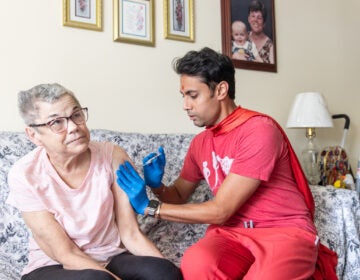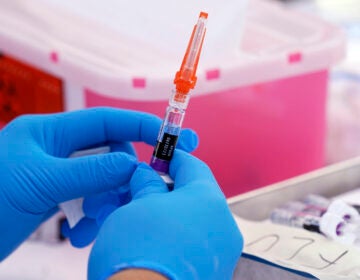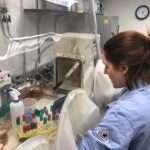Learning the language of coronavirus and epidemiology
With cases of the virus now confirmed in Pennsylvania and N.J, unfamiliar words and acronyms are being used. Here is a guide to some of them.

Stocking up on medical supplies and food could be helpful if the new coronavirus spreads in your community and you want to avoid store lines where you could be at risk of infection from others. (Max Posner/NPR)
Updated 4:45 p.m. March 11
Government reports and news coverage of the spread of the coronavirus and COVID-19, the illness it causes, has introduced us to a new world of words and acronyms. Here are some of the more common terms, as defined by the Centers for Disease Control and Prevention and the World Health Organization, among other groups:
Community spread or community transmission: A case that has occurred without “relevant travel history or exposure to another known patient.”
Epidemic, outbreak and pandemic: An epidemic is a sudden increase in the number of cases of a disease. An outbreak is generally considered the same as an epidemic, but in one area. A pandemic is an epidemic that has spread to several continents or countries.
Flattening the curve: When an epidemic spreads, cases grow exponentially as more people become infected and, in turn, infect other people. “Flattening the curve” means trying to slow the spread of COVID-19 so that there isn’t an exponential growth — people still get sick, but hospitals and essential services don’t get a surge of cases and are able to keep up.
Isolation: When someone is kept away from other people and is also sick. Think here about a hospital setting in which someone is in a private room, and the people coming in and out are using personal protective equipment. Self-isolation means staying sick at home while avoiding contact with other people.
Lower respiratory tract: This refers specifically to the airways and lungs — as compared to upper respiratory tract, the sinuses and throat.
Quarantine: Separating and restricting the movements of individuals who are currently well, but have been exposed, or have reason to believe they may have been exposed, to keep then away from other people. For example, this means not using public transportation, using distancing measures to keep 6 feet away from uninfected people, and being especially careful about coughing and disinfecting. If you are in quarantine, you are not yet ill but might become ill.
PCR: Polymerase chain reaction. Tests the CDC has designed to detect the coronavirus use PCR, which allows scientists to quickly check for tiny amounts of viral genetic material in a sample with great accuracy. Using some information about the specific code of viral genetic material, the test can magnify even tiny amounts of virus in a human sample.
PPE: Personal protective equipment. This refers to gloves, gowns, eye protection, and N95 facepiece respirators or masks. These are requirements for health care workers. If you aren’t sick, you shouldn’t wear masks, the CDC says, but instead continue to wash your hands, cover your cough, and stay home when sick. N95 masks are special because they fit close to the face and filter out even the smallest particles. They should be reserved for health care workers.
Presumed/presumptive positive: A patient with a positive test for COVID-19 confirmed by a state health department but not yet confirmed by the CDC. After the CDC retests a patient, a “presumed positive” case becomes a positive case.
PUI: Person under investigation. This is someone the CDC believes might have COVID-19.
SARS-CoV-2 and COVID-19 : SARS-CoV-2 is the official name for the physical virus that we call the coronavirus. (The term “coronavirus” refers to a family of viruses and is based on their distinctive shape.) SARS is for Severe Acute Respiratory Syndrome, CoV is for coronavirus, and 2 is because this virus is genetically related to the SARS virus of 2003. COVID-19 is the illness, also referred to as coronavirus 2019.
Sputum, oropharyngeal and nasopharyngeal: Sputum, as defined by the National Cancer Institute, is just mucus and matter brought up from the lungs when you cough. This is distinct from the spit in your mouth, which is made up of watery saliva. Think about the difference between spitting and coughing up phlegm. A nasopharyngeal swab is the common test for the coronavirus. This is a swab that goes from the area behind the nose at the top of your throat. Oropharyngeal is the same idea, just done at the area at the back of your mouth, where it meets your throat.
WHYY is your source for fact-based, in-depth journalism and information. As a nonprofit organization, we rely on financial support from readers like you. Please give today.


![CoronavirusPandemic_1024x512[1]](https://whyy.org/wp-content/uploads/2020/03/CoronavirusPandemic_1024x5121-300x150.jpg)



